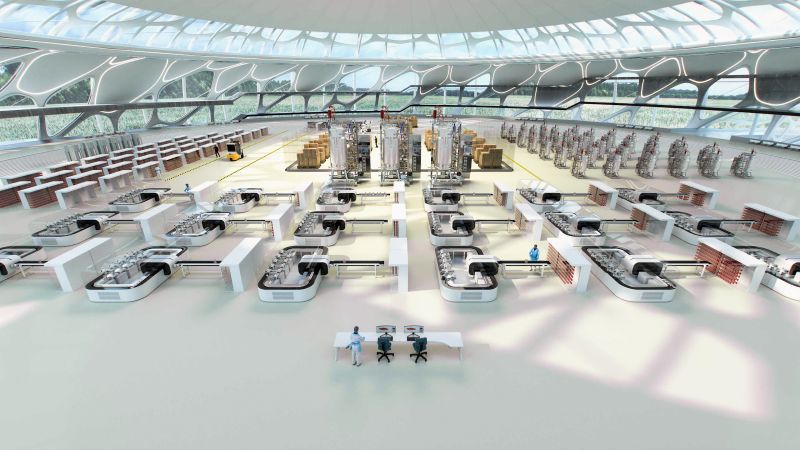Alternative meats enter 2024 marked by wins and losses. The U.S. led the way with major regulatory approvals by the Food and Drug Administration (FDA), including Good Meat‘s lab-grown chicken by Eat Just and Upside Foods‘ cultivated meat. While these milestones might signal a shift in the American market toward embracing these new products, a recent study by the University of California, Davis, raised environmental concerns about the sustainability of lab-grown meats. In Europe, the Netherlands took a pioneering step by enabling pre-market taste tests of cultivated meat, backed by strong government support. The industry also made inroads into alternative seafood, with progress in cell-cultivated and 3D printed options.
As the year unfolds, the alternative meat industry will grapple with a diverse regulatory environment. Italy’s latest ban on lab-grown foods represents a significant challenge and could influence similar decisions in other regions. This protective approach towards farmers is also evident in ongoing debates in Romania and the state of Florida. These contrasting global stances highlight the mixed responses to alternative meat technologies. Moving forward, the industry must balance innovation with conventional agricultural practices, environmental considerations, and a rapidly changing regulatory landscape.
 Upside Foods fried chicken made from cultivated animal cells. Image courtesy of Upside Foods.
Upside Foods fried chicken made from cultivated animal cells. Image courtesy of Upside Foods.Transforming Meat
Reflecting on the last decade, 3DPrint.com highlighted in October 2023 the remarkable journey of cultured and bioprinted meat. This decade-long saga began with foundational work in the early 2010s by pioneers like Dutch researcher Willem van Eelen and Mark Post, who introduced the world to the first lab-grown burger in 2013.
The journey progressed with a surge of startups in the U.S. and a wave of innovation in Israel. However, the turning point came in 2018 with increased investments and the development of complex bioprinted meats like Aleph Farms‘ steak. Despite regulatory hurdles and public skepticism, the industry persevered, with 2019 marking a year of significant research and global discussions. The momentum continued into the 2020s, highlighted by Singapore’s approval of cultured chicken and the industry’s resilience during the COVID-19 pandemic. In 2022, the focus shifted to public taste tests, gaining regulatory approvals, and scaling up production, with major industry players joining.
 Cultivated meat. Image courtesy of Aleph Farms.
Cultivated meat. Image courtesy of Aleph Farms.In June 2023, the U.S. Department of Agriculture‘s (USDA) authorization for lab-grown meat sales marked a significant shift, aligning the country with Singapore’s earlier decision. This move enabled Upside Foods and Good Meat to bring lab-grown chicken to the American market. Later in the year, Upside Foods’ cultivated meat received a critical endorsement from the FDA, a first in its category to complete the agency’s pre-market consultation. These steps in 2023 greatly advanced the alternative meat industry, paving the way for further growth into 2024.
Future Bites?
In contrast to the advancements in the U.S., November 2023 also saw Italy take a decidedly different stance on lab-grown food. The Italian parliament approved a law banning the use, sale, import, and export of lab-grown food and animal feed derived from vertebrate animals. Violations of this law could lead to hefty fines of up to €150,000 and potential shutdowns of offending facilities, with owners risking the loss of public funding eligibility for up to three years.
Spearheaded by Agriculture Minister Francesco Lollobrigida, this move aligns with the right coalition’s effort to preserve traditional food production methods. The law’s passage was not without controversy, as it sparked tensions between agricultural lobbyists and some opposition lawmakers. While supporters of the ban argue for the protection of traditional agriculture and food industries, critics point out the environmental benefits of lab-grown meats, such as reduced greenhouse gas emissions and the ethical advantage of not involving animal slaughter. This legislative action by Italy raises questions about potential conflicts with European Union (EU) single market rules, especially if the EU decides to permit lab-grown foods in the future. The confrontation highlighted the deep divide in opinions regarding lab-grown foods.
Tomorrow’s Table
Following the trend in Italy, similar legislative actions emerged in Florida and Romania. Florida State Representative Tyler Sirois proposed a bill to criminalize the sale of cultivated meat, framing it as an affront to traditional farming and the latest front in the environmental, social, and corporate governance agenda. Critics of Sirois’s bill argue that lab-grown meat, being more sustainable and ethical, should not be dismissed. However, the bill positions Florida potentially as the first U.S. state to enact such a ban amidst national discussions on the nature and labeling of cultivated meat.
In Romania, the Senate passed a bill banning the sale of lab-grown synthetic meat, focusing on safeguarding public health and providing consumers with accurate information. The bill, initiated by the Social Democratic Party, aims to regulate the naming and marketing of meat products and defines “Romanian product” as meat exclusively from Romanian farms. This move, still subject to approval, could impact the domestic market and potentially conflict with EU standards. Critics, including the Good Food Institute Europe, argue that cultivated meat offers environmental benefits and that the ban could isolate Romania from advancements and opportunities in this evolving sector.
Tech on the Table
These recent decisions across the globe have significant implications for the 3D printing sector in the alternative meat industry. Since its inception, 3D bioprinting technology has helped in the evolution of this niche sector, going from a futuristic idea into a tangible reality. As countries like the U.S. open doors to these innovations, the technology could grow and develop. Instead, decisions to ban cultured meats may slow down the momentum of 3D bioprinting food technologies.
 MeaTech’s vision of a factory of the future for cultured meat. Image courtesy of MeaTech.
MeaTech’s vision of a factory of the future for cultured meat. Image courtesy of MeaTech.As more nations contemplate their stance on these technologies, the future course of 3D printing in the alternative meat sector reflects a global balancing act. Therefore, the path ahead for 3D printing in this domain remains scrutinized and debated. These recent global decisions are part of an ongoing dialogue about technological innovation and ethical, environmental, and health considerations. As the debate continues and more research emerges, the long-term impact of these technologies on the food industry and consumer choices will likely become clearer.
Subscribe to Our Email Newsletter
Stay up-to-date on all the latest news from the 3D printing industry and receive information and offers from third party vendors.
Print Services
Upload your 3D Models and get them printed quickly and efficiently.
You May Also Like
3D Printing News Briefs, July 2, 2025: Copper Alloys, Defense Manufacturing, & More
We’re starting off with metals in today’s 3D Printing News Briefs, as Farsoon has unveiled a large-scale AM solution for copper alloys, and Meltio used its wire-laser metal solution to...
Etsy Design Rule Change Reduces Selection of 3D Printed Goods
Online marketplace Etsy has implemented a rule change requiring all 3D printed goods on the site to be original designs. The update to the site’s Creativity Standards states, ¨Items produced using...
Siraya Tech Introduces New Elastomer 3D Printing Materials, Including Foaming TPU
California company Siraya Tech, founded in 2019 with a focus on material science, customer focus, and agility, develops high-quality 3D printing materials that meet the needs of creators, hobbyists, and...
3D Printing News Briefs, April 12, 2025: RAPID Roundup
The news from last week’s RAPID+TCT in Detroit just keeps on coming! That’s why today’s 3D Printing News Briefs is another RAPID Roundup of more exciting announcements from the trade...

































